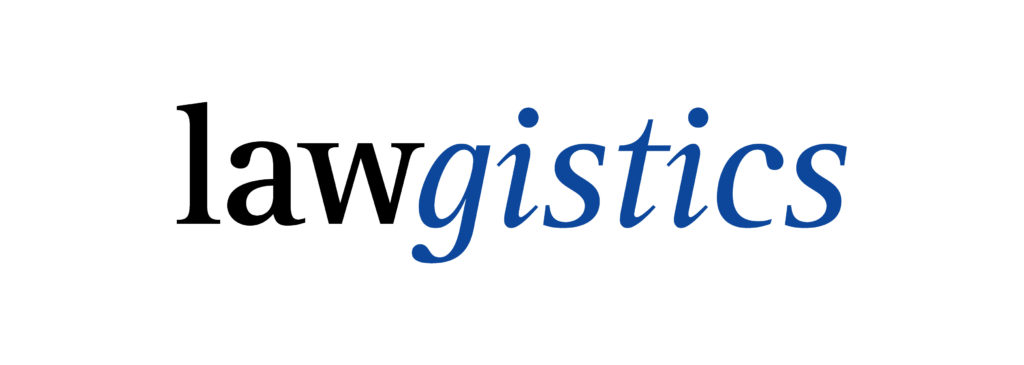GUEST CONTRIBUTOR
By Joel Combes, Sales & Marketing Director at Lawgistics & HR Manager
Be an innovator not an imitator
In a competitive market it’s always hard to think of ways to get ahead of the competition and more often than not it boils down to the two same options;
- make your product or service the cheapest, or
- make your product or service the best
Making your product or service the cheapest is probably the most obvious and certainly the option the majority of businesses take.
However, following the trend does not mean it’s the right option. Talking from experience, discounting your product will not add any value to your business in the long term.
Making your product or service the best will take more time and effort but with a little bit of thought it doesn’t necessarily need to cost more money.
In fact, if you can find a way to make your product or service more attractive than your competitors and sell it at the same price, your competitors will be forced to discount, crippling their bottom line and leaving no margin to invest back into their business.
Using this technique will enable you to sell more, at the margins your business requires to grow, thus leaving your competitors fighting over the scraps.
In 2008 I was promoted from a Lawgistics Sales Consultant to the Sales and Marketing Director. Lawgistics had been trading for eight years and had aligned itself with the competitors in a price war.
As a former sales consultant for the company I was as guilty as anyone else at discounting our services to win an order. In the early days achieving monthly targets was a necessity. We all know how the motor trade likes a deal, so discount was our preferable choice to close a sale.
Looking at the situation from my new position, the detrimental effect of discounting was clear. The margins we were making paid the overheads but nothing more, which meant a marketing budget was out of the question.
As the new Sales and Marketing Director the task of ‘marketing’ seemed impossible to achieve. However, if we continued to discount to win the sales it was also clear that we would be in the same situation in ten years time. We needed to be recognised for offering more than our competitors, provide something better that set us apart. However, with no marketing budget it was going to be a challenge.
We turned to email.
None of our competitors were using this marketing platform at the time and as email had not yet been commercialised it was an incredibly cheap option. We were already providing a hard copy, monthly newsletter to our 300 members, containing information about cases we had handled and relevant legal updates. The production and despatch cost for this was about £250 per month which was only going to increase as we took on more members. Looking at software to create and deliver the same product and service was a fraction of the price, in-fact for £75 we could deliver 5000 emails per month, a saving of £175 and reaching out to 4700 more contacts each month.
It’s funny looking back, at the number of discussions we had about how our members would accept such a change. It was a perceived risk to move from a paper newsletter to an email. Our competitors all provided paper newsletters and we wondered whether businesses would choose them over us if we took this new route.
Shoulder to shoulder with our competitors, and going no further without doing something, we decided to make the change.
We had made a massive saving on postage, giving me a marketing budget of £150 a month and a quota to send out a further 4700 emails.
Joel Combes, Sales & Marketing Director at Lawgistics & HR Manager.
We collected our members emails on client care calls and explained how we were switching to a digital newsletter. As suspected, we did get complaints but only from 5%, to whom we agreed to keep sending a printed version to avoid friction. This was brilliant, we had made a massive saving on postage, giving me a marketing budget of £150 a month and a quota to send out a further 4700 emails.
This was a significant point in Lawgistics marketing strategy. This was when I realised the potential of an online presence. Although we were offering the same as our competitors, online we could present ourselves differently, setting ourselves apart from the competition.
I spent the entire 12-month marketing budget (£1800) on a new website. I took time to define our services making our offering more tangible so website visitors could see the value of becoming a member without the intervention of a sales consultant. We had a back catalogue of newsletters uploaded and accessible at any time, which previously would have been posted, read once and then disregarded. This was our content, and this showed the breadth of knowledge and cases we could deal with. We also introduced online range of stationery for members giving Lawgistics another edge over competitors. We created tiered membership packages with different service levels, including a Legal Helpline, Casework Service and Online Account.
At this point we had still not spent any more money than we had originally been spending and therefore we could afford to sell at the same price as our competitors. However, the product and service offered looked fantastic and, as we had already discovered, charging too little would not give the company money to invest in the future. We therefore decided to increase our prices 20% above our competitors… on the understanding that if we had to discount, we could match their price rather than cut our price.
Once our online visibility had been revamped, we were ready to launch and used our remaining 4700 email sends to market our services monthly to prospects.
For the first year our approach to email marketing worked well but in the second year we saw less enquirers and more opt outs. We then realised that although we had the ability to continually communicate with our new audience, they were not interested in being sold to at every opportunity. We then took the brave decision to stop advertising our services via email and instead use email to distribute our member newsletter to anyone in the motor trade.
Networking matters.
We approached motor trade federations, associations and buying groups offering our free legal updates, via email, for their members and by 2010 we had 10,000 subscribers to the newsletter. We started to achieve amazing open rates and great feedback, including sales on every send! We made the decision to commit to sending out the newsletter every other week and sure enough the monthly response doubled.
Our Membership started to grow rapidly compared to the first eight years and by 2014 we had approximately 600 members, leaving our competitors slashing their prices to try and keep up.
In 2015 we first saw the real value of our email newsletter. Subscribers had risen to over 14,000 and the Consumer Rights Act was about to come in. We started to publish guidance notes on how dealers should prepare and, suddenly, found ourselves flooded with enquirers. Not only motor dealers, industry and national papers were contacting us for advice. I remember publishing a story in one newsletter about using PDI pads with a link to our online stationery and then selling £12,000 worth of pads from the link.
This was a turning point for Lawgistics, we were at critical mass, taking on more member cases and new members than we had ever encountered. We needed to recruit more lawyers and we needed them to start immediately.
The team grew fast, from a team of 4 legal advisors to a team of 10 by 2018.
The team was over double the size of our competitors and meant we could offer a wider breadth of knowledge on issues concerning the industry. We were also able to collect information on trends and have the time to start working alongside industry federations.
As far as pricing, we are now at least 10% more expensive than other companies providing similar legal services in the motor trade. I no longer call them competitors as they cannot offer the service we can. We do not have to discount, and we can assure members the additional money they pay is all reinvested into developing our services to help make their job easier.
For example, over the past 3 years we have invested over £250,000 into our new compliance software which we released in January 2019, at no extra cost to our members… a story for another day.
Subscribe to Lawgistics Legal Updates they’re FREE and contain useful information regarding changes in law and legal cases relative to the automotive industry.














